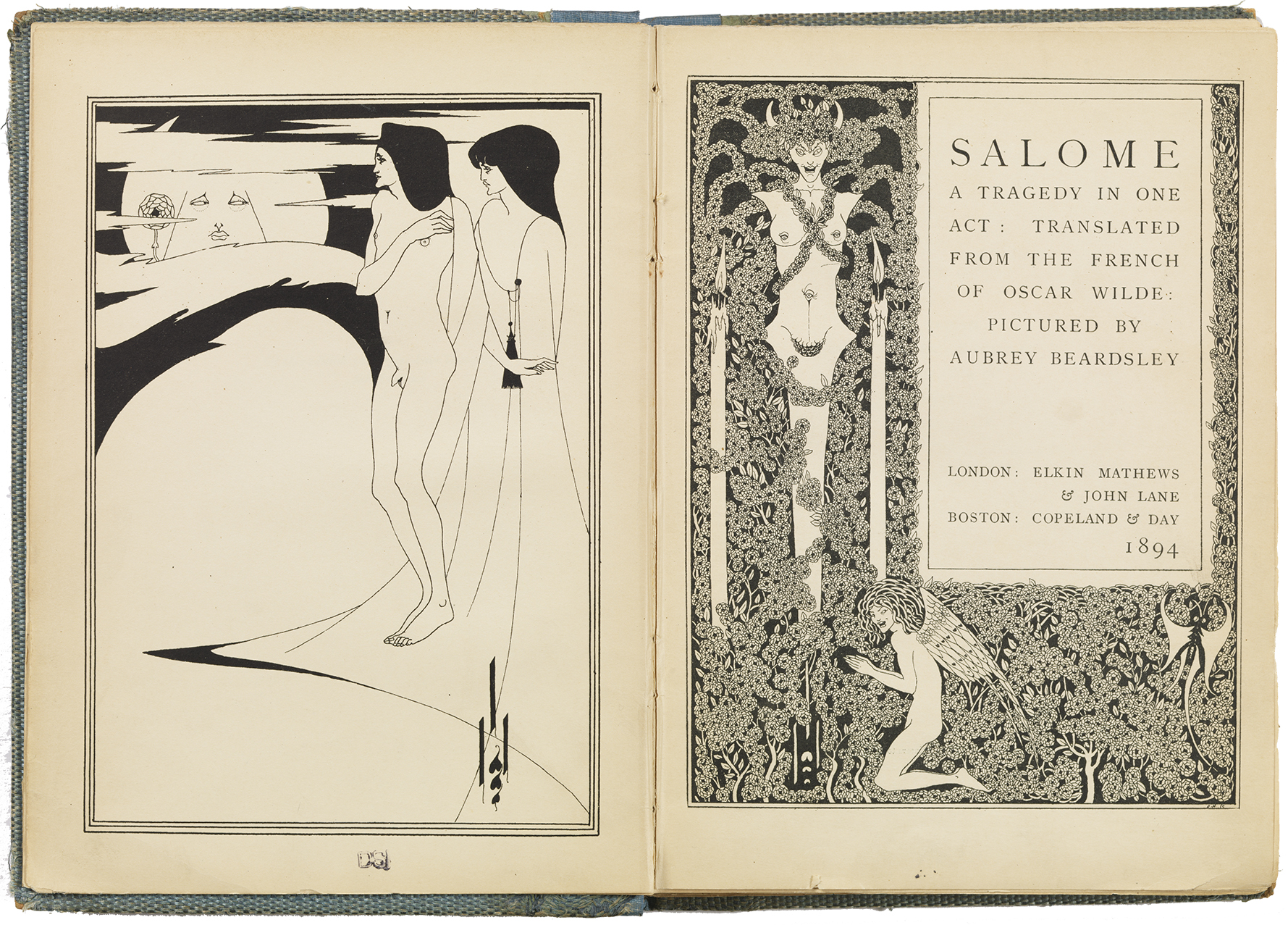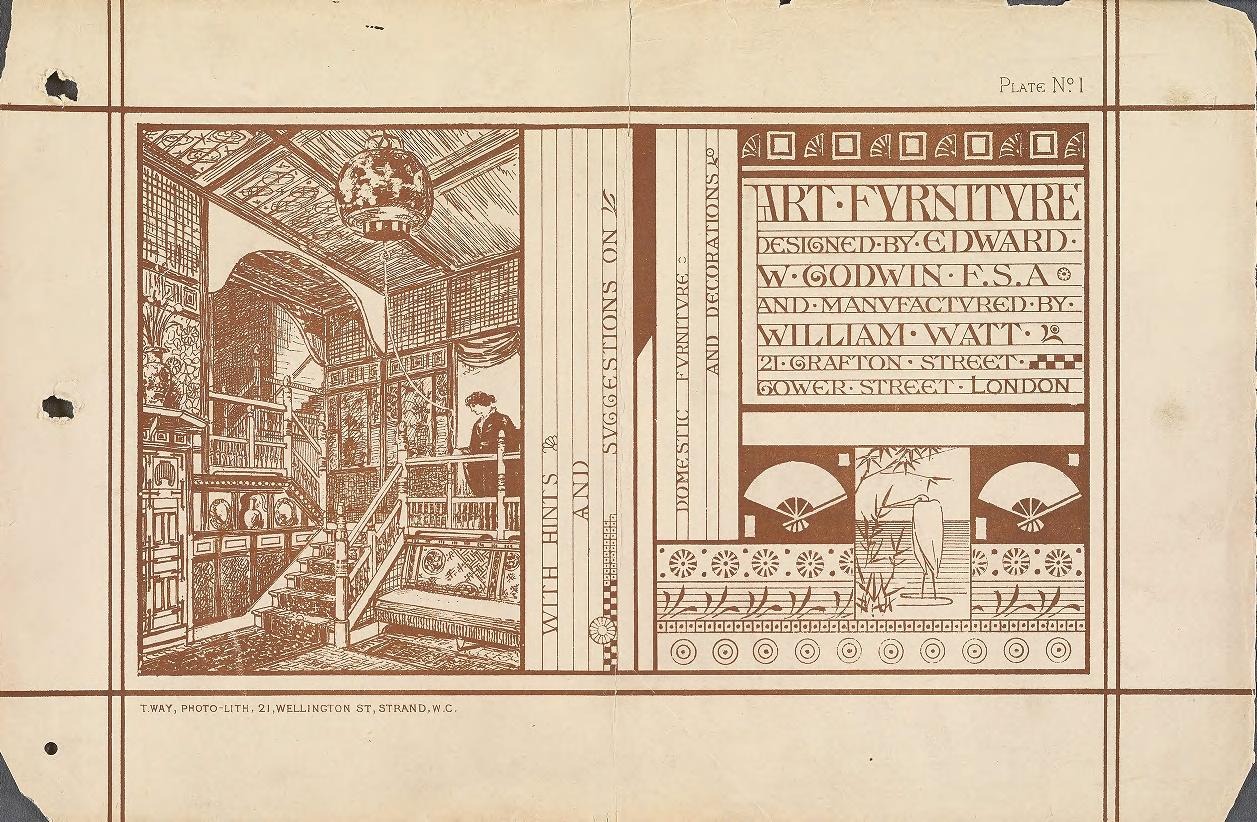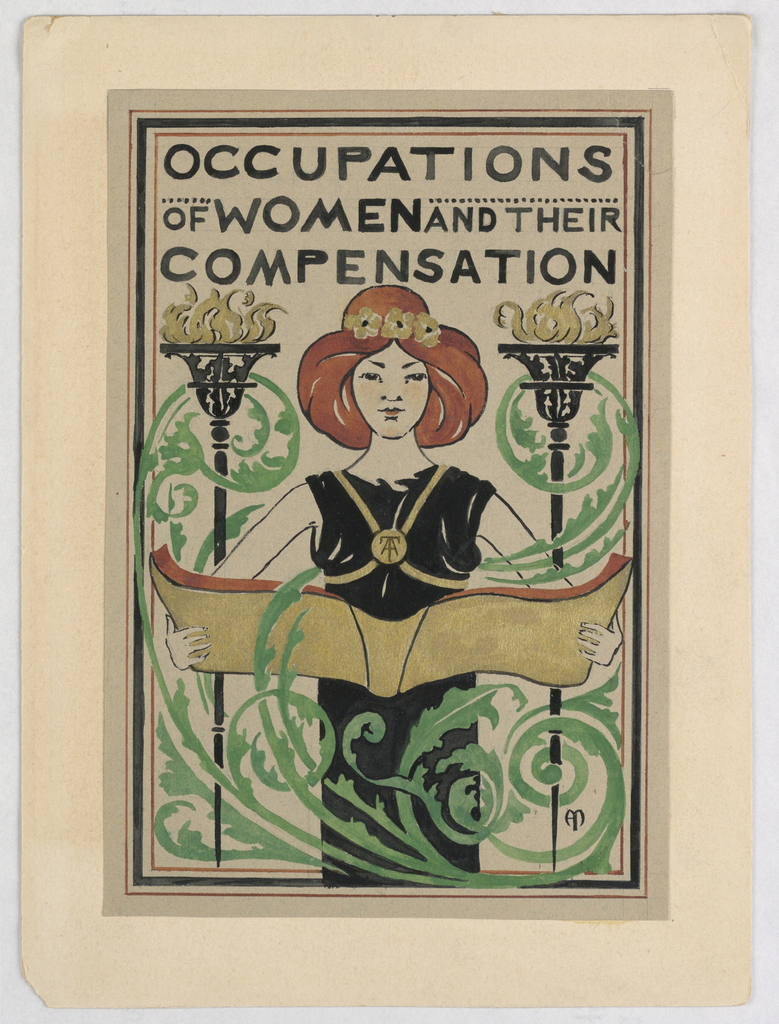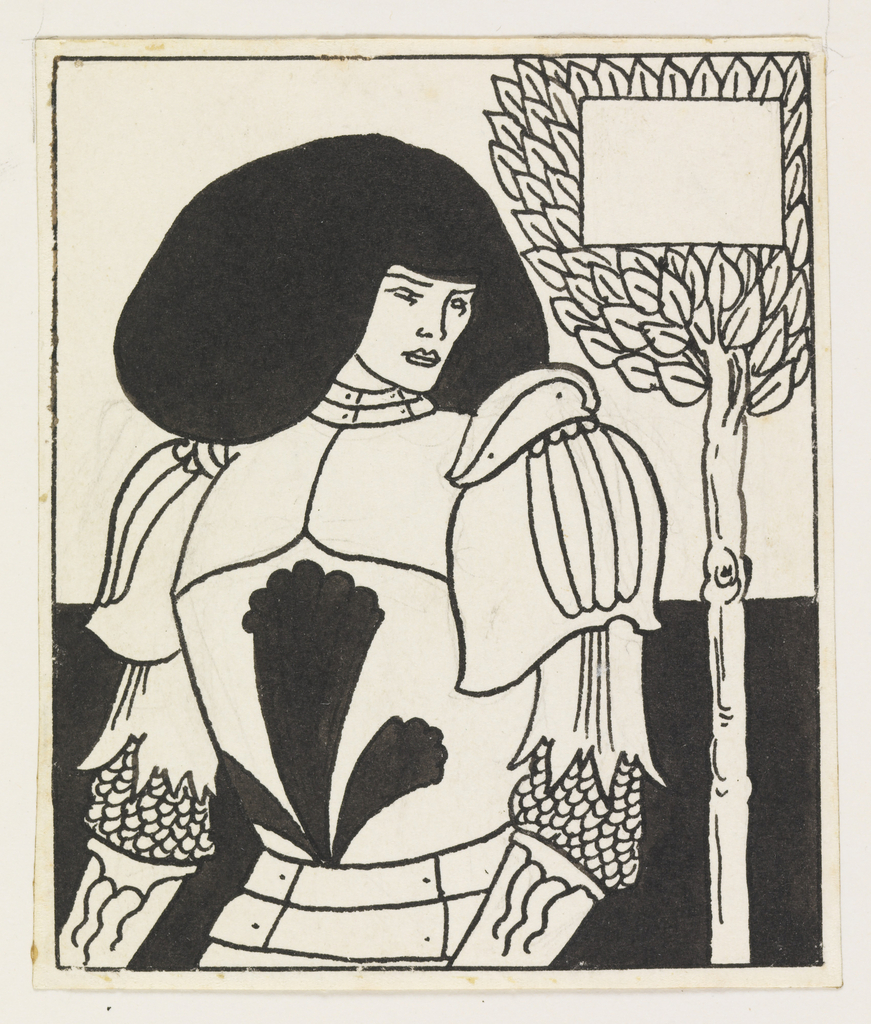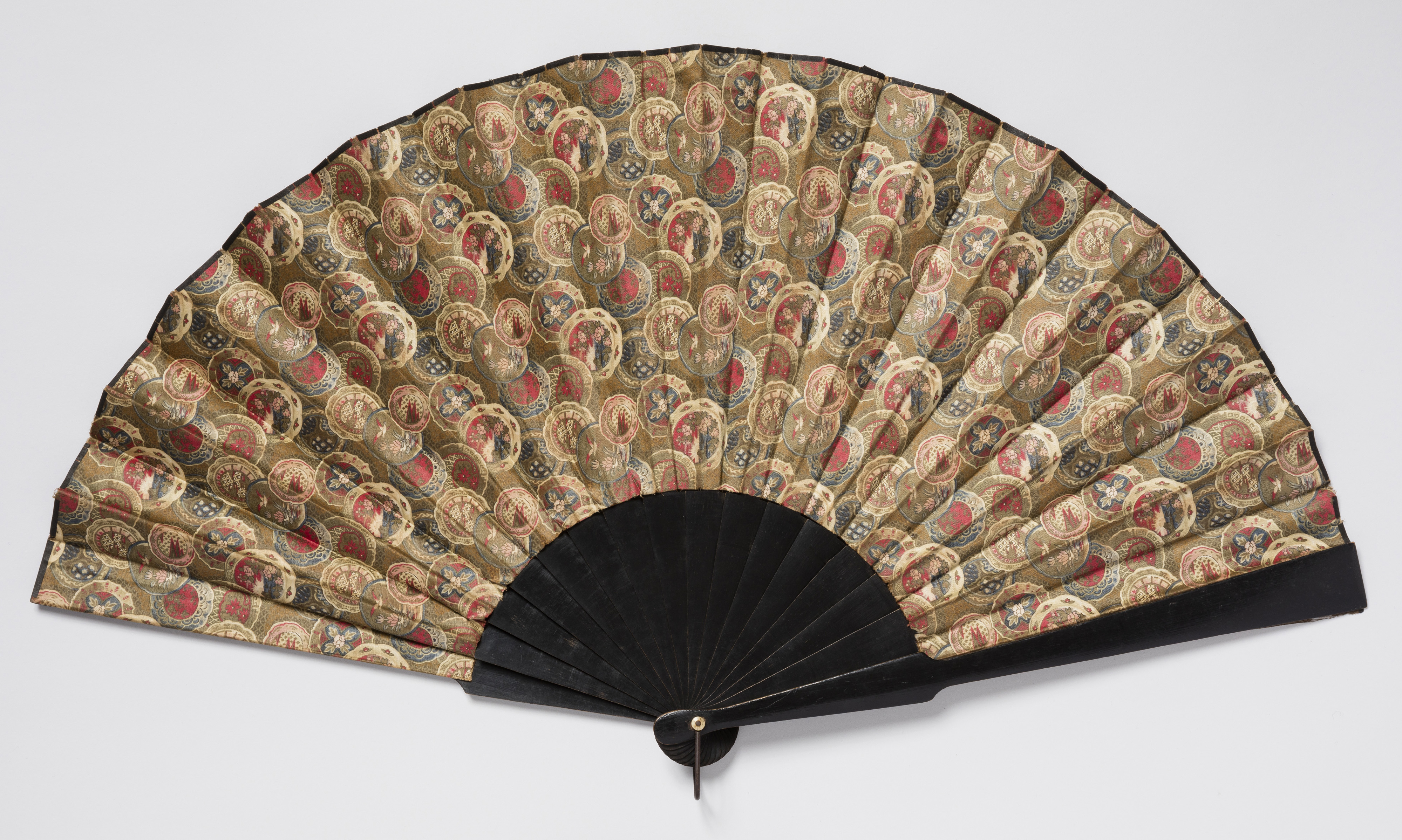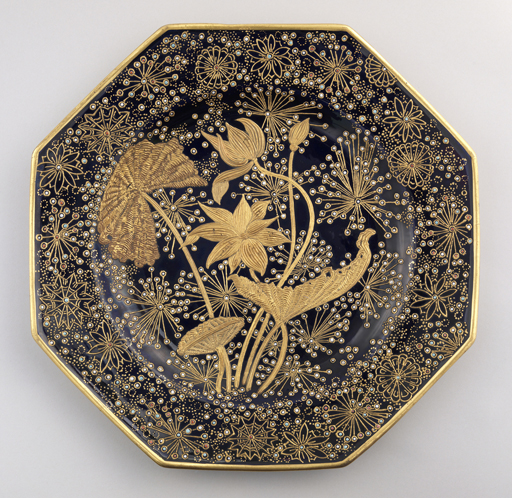When Salome requests a severed head on a platter, be careful what you wish for. Or write. Or draw. In 1894, Oscar Wilde and Aubrey Beardsley—both considered enfants terribles of Victorian England for their provocative work and lifestyles—produced a printed edition of Wilde’s play Salome. Wilde’s psychological centralization on the character of Salome and Beardsley’s...
In 1877, commercial designer and architect Edward William Godwin collaborated with furniture manufacturer William Watt to produce this trade catalogue held in the Cooper Hewitt Library. Godwin was considered the most innovative designer of the Aesthetic Movement. A brief but pivotal moment in the history of the decorative arts, Aestheticism strove to bring art into...
The career of Alice Cordelia Morse reflects the changing role of women in art and society in the late 19th century. Morse was able to achieve success in many artistic fields, designing book covers, illustrations, and stained glass, while also experimenting with other decorative media such as china painting and needlework. Although this title-page design was...
The publisher J.M. Dent was an admirer of William Morris’s Kelmscott Press, founded in 1889 and known for expensive, lavish publications featuring illustrations and decorations by artists such as Edward Burne-Jones printed from hand-cut woodblocks. Dent conceived the idea of producing books in the style of the Kelmscott Press but at a much lower cost,...
Walter Crane was one of the most successful of late Victorian designers, and this must be one of his most beautiful patterns for wallpaper. It is a multi-layered design featuring several fantastical motifs such as winged sphinxes, winged lions, peacocks, the biblical Tree of Knowledge with the serpent wrapped around it, and medieval standards topped...
This folding fan dating from the 1880’s-90’s is a perfect example of the expression of the Aesthetic Movement in costume accessories. Fans and the Aesthetic Movement are deeply intertwined. The Aesthetic style was strongly influenced by the decorative arts of Asia, where fans originated. During the late 19th century, Asian fans, particularly from Japan, were...
Louis Comfort Tiffany used exotic motifs, extraordinary color, and abstracted forms in his lamps and art glass to become one of the most instrumental figures in American design history. While the Tiffany Studios stopped producing goods almost a century ago, the meticulous craftsmanship that went into the making of the studio’s lamps and vases has...
Wallpaper, like all design, can be a powerful tool for communicating a specific message. Take for example wallpapers printed during the French Revolution that portrayed ribbons of red, white and blue in support of the uprising. On this object, however, a message has been spelled-out right on top of the design, the pattern becoming a...
In the last quarter of the nineteenth century the Greenpoint neighborhood of Brooklyn was a hub for ceramic production and home to at least a dozen major firms. The beaches of the East River offered plentiful white sand and underdeveloped land near the shore accommodated the building of large factories. These firms produced a broad...
